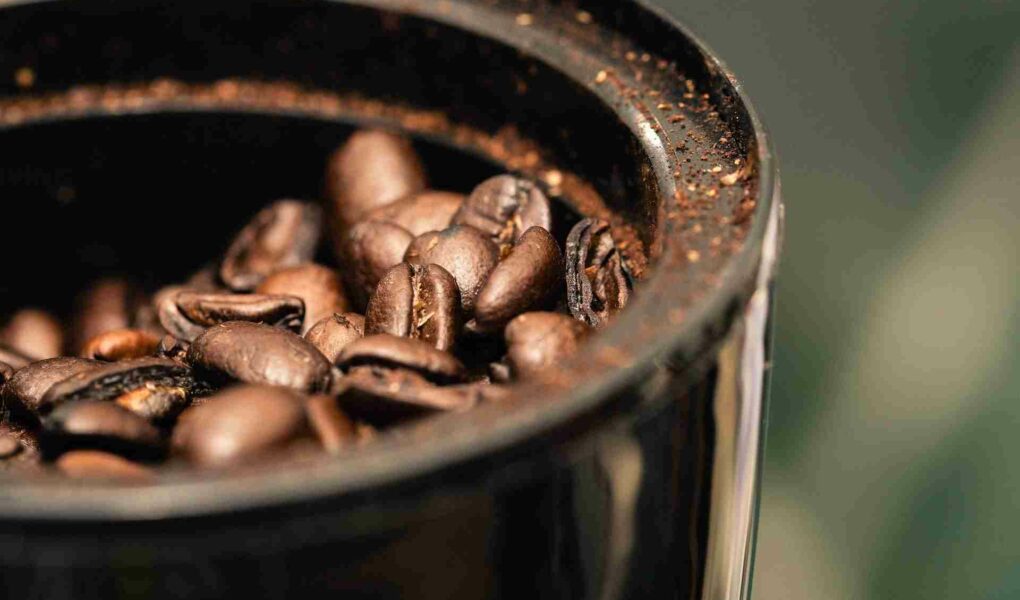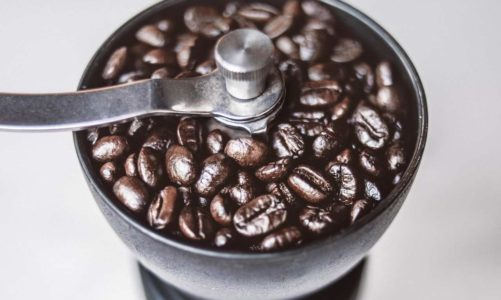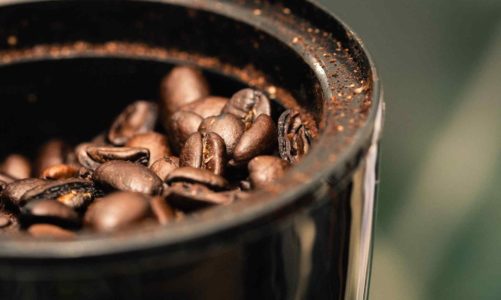There are many different grind levels of coffee that serve purposes for different brewing methods. Therefore, there are different styles of coffee grinder, each with its own characteristics, benefits, and downsides. While most grinders with be suitable for at-home brewing, it is important to ensure that a grinder has the features you are looking for before making potentially expensive purchases, especially for those coffee machines with built in grinders. We are taking a look at 9 types of coffee grinders and how they work.
Now for the average coffee drinker, the type of grinder used wouldn’t even be a consideration. The only noticeable factor would be using a manual grinder vs automatic grinder, otherwise, all other grinders are compared by their inner-workings that include blade types, which direction the grounds flow, the speed they grind at, and more. All of which are irrelevant to someone who just wants to make a cup of coffee.
But coffee is a science, from the growth stage all the way through to entering your body and the way it impacts your body. One small change along the entire process can impact the taste, texture, and even how it affects your body. The same applies to grinding coffee, each different grind size will retain certain characteristics or loss them, result in a different brew type, and more. That’s why it’s beneficial to understand the types of grinder and also the best coffee grinders.
Automatic Electric Grinders
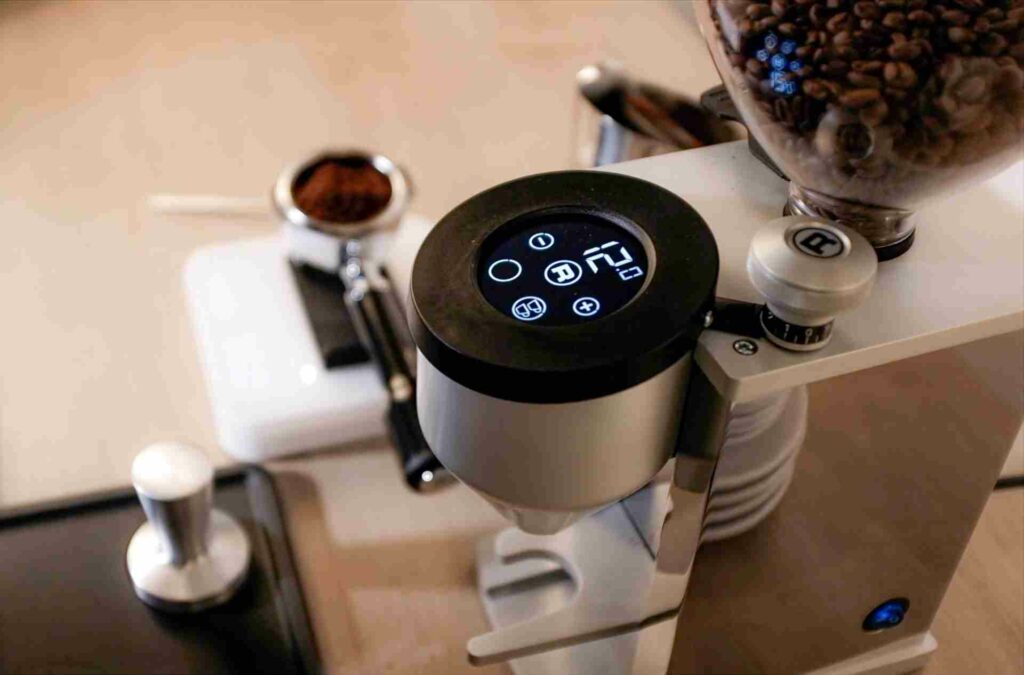
Most modern coffee grinders are electric-powered and feature some form of automated operations. While this could mean the use of buttons, levers, or other components, they share in the fact that they are not manually operated. Most of these grinders use blade or burr technology. There are more specific types among these, depending on speed, gears, steps, and other features that separate each specific grinder from one another.
Blade Grinders
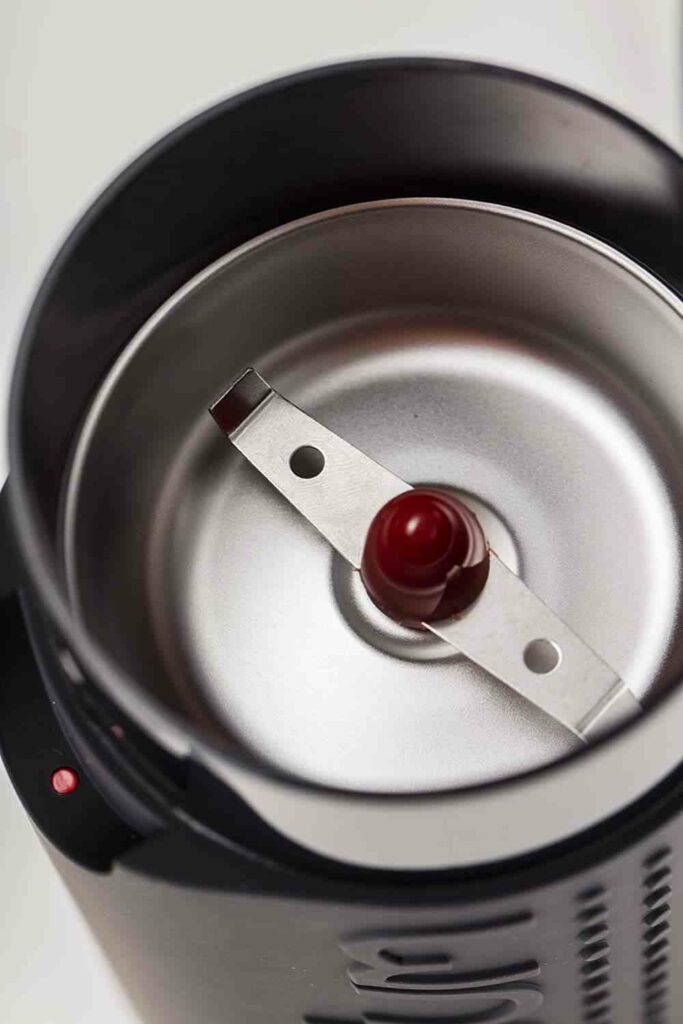
Blade grinders use one or two long blades to grind coffee. When using two blades, the blades intersect to appear as if there are four blade prongs at the bottom of the grinder. The blade or blades rotate rapidly, essentially chopping the coffee beans as they spin. Most blade grinders offer a single button for operation, making their use very simple. Additionally, blade grinders are often significantly cheaper than burr grinders.
However, there are downsides to the price and simplicity. Since the blades are chopping the beans, the consistency of the grind can be fairly poor. Blade grinders are inconsistent, with some beans being finely ground and others left in larger pieces. For many brewing methods using medium-ground coffee, this might not be the biggest issue, but the grind and taste may vary between batches.
Burr Grinders
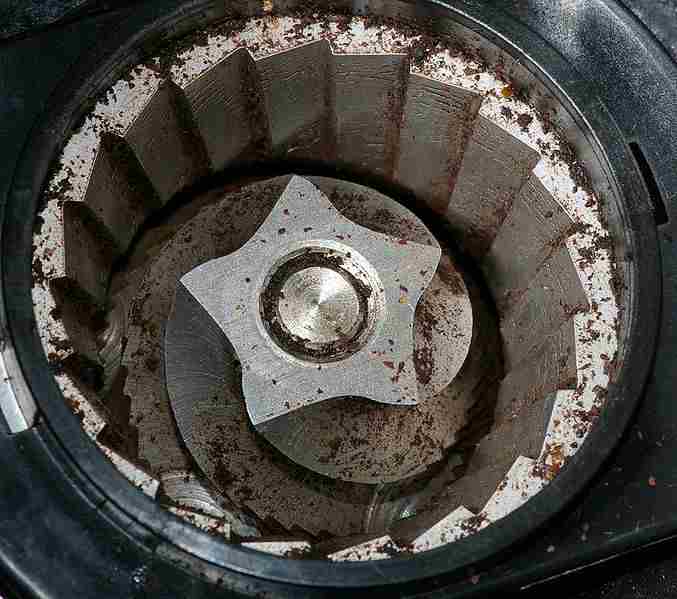
One of the most popular and well known types of coffee grinders is the burr grinder, also called a burr mill. Burr grinders crush coffee beans into nearly uniform sizes for consistent and delicious coffee. This style of grinder features two burrs moving in opposite directions to crush the beans. These burrs are serrated, abrasive plates that are generally made out of steel or ceramic.
While steel burrs are effective and affordable, ceramic burrs have a much longer lifespan and consistent grind. Most burr grinders are adjustable, meaning users can set how far apart the burrs are. The closer together the burrs are, the finer the grind. Alternately, the farther apart the burrs are set, the coarser the grind will be. There are two main types of burr grinder: conical burr grinders and flat burr grinders.
Conical Burr Grinders
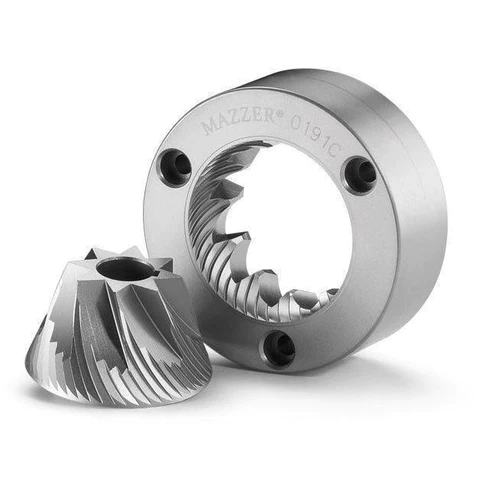
Conical burr grinders are the most common type of burr grinders, especially for brewing standard coffee. Like other burr grinders, conical grinders have two burrs. The outside burr is cone-shaped (or round), sharp, and serrated.
A less sharp and smaller cone-shaped burr rotates inside the larger burr, providing a nearly uniform grind. Conical burr grinders are versatile in the size of grind they produce, but finer grounds will not be as uniform as those produced by flat burr grinders.
Flat Burr Grinders
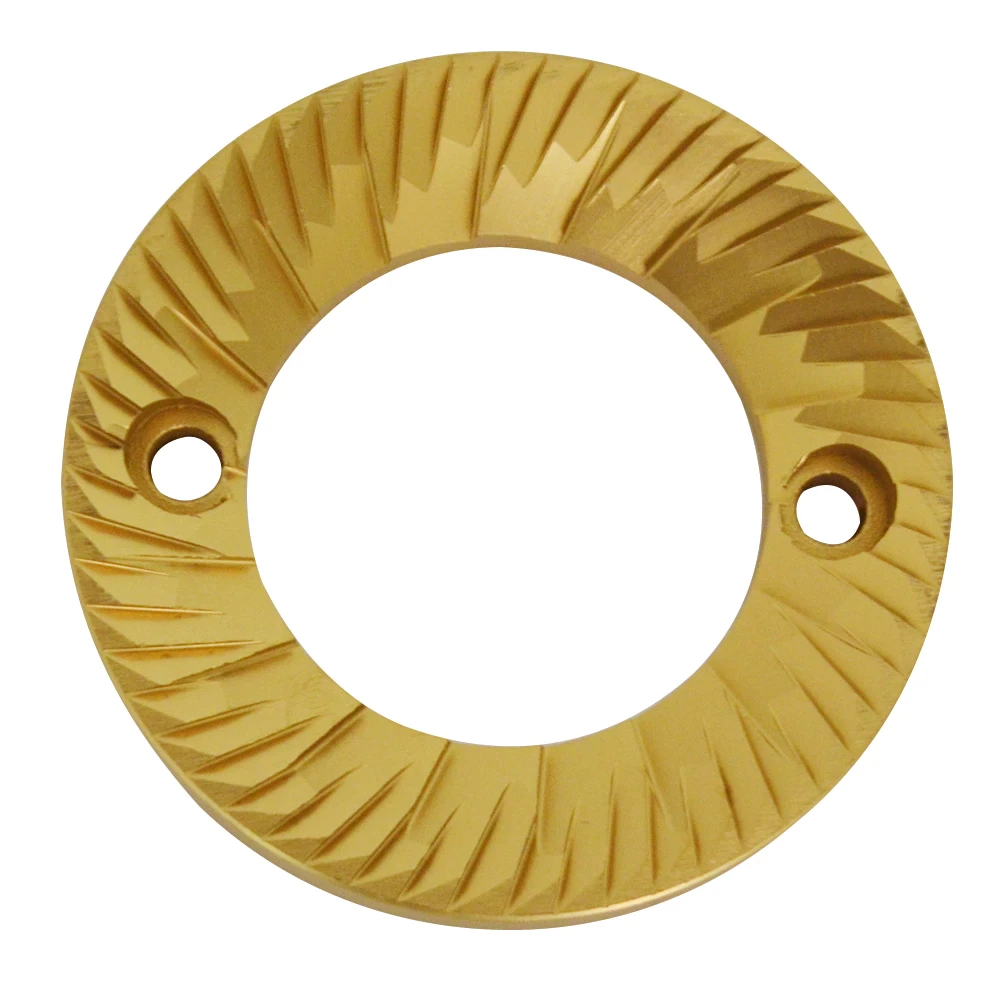
Flat burr grinders are not as common as conical burr grinders, but they are especially popular for grinding coffee for espresso. Flat burr grinders use two, round burrs that face each other. The outside of the burrs is extremely sharp, and coffee beans are ground between the two rotating burrs.
Flat burr grinders produce a more uniform grind compared to conical burrs, making them more suitable for espresso since espresso relies on uniformly fine ground coffee.
High and Low Speed Grinders
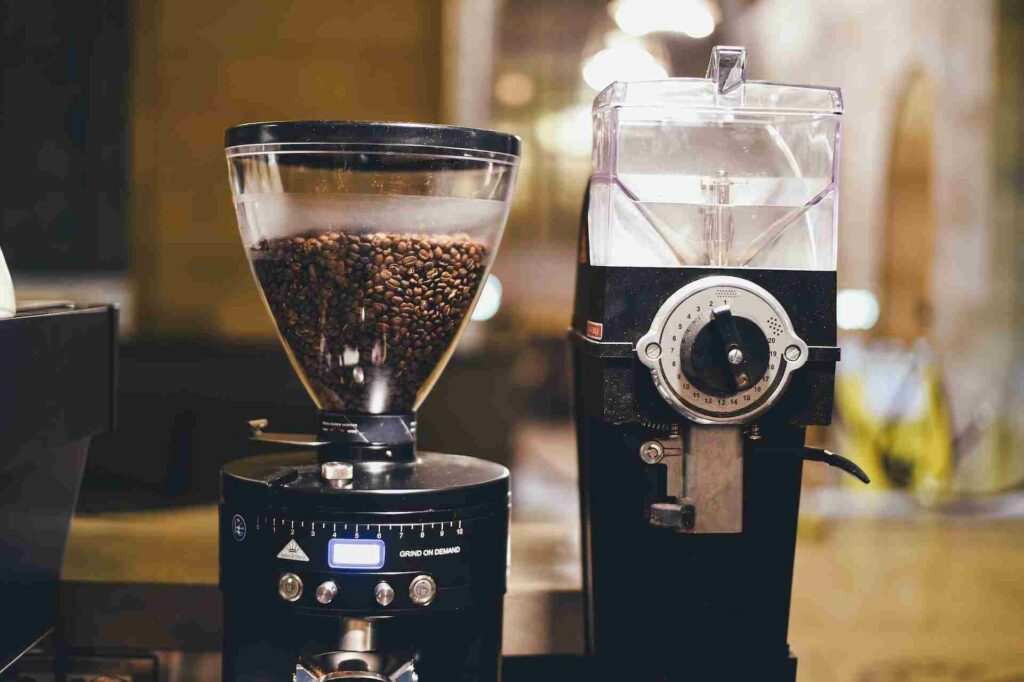
Different models of grinder will have different Revolutions Per Minute, or RPM. This refers to the rotational speed of the blades or burrs. Unless specifically labeled as a high-speed grinder, most grinders would be considered low-speed grinders.
Low-speed grinders usually use flat or conical burrs. While these grinders may operate at lower speeds, therefore taking longer to grind the coffee, they also generate less heat, make less noise, and require less maintenance than high-speed models. Low-speed grinders are also cheaper.
High-speed grinders achieve higher RPMs by connecting a motor directly to the burrs, while low-speed grinders often have both a motor and sets of gears connected to the burrs. High-speed grinders almost always use flat burrs.
Due to the speed and power, high-speed grinders achieve extremely consistent grinds within much shorter periods of time. However, high-speed grinders are much more expensive and very loud compared to lower-speed options.
Dosing and Non-Dosing Grinders
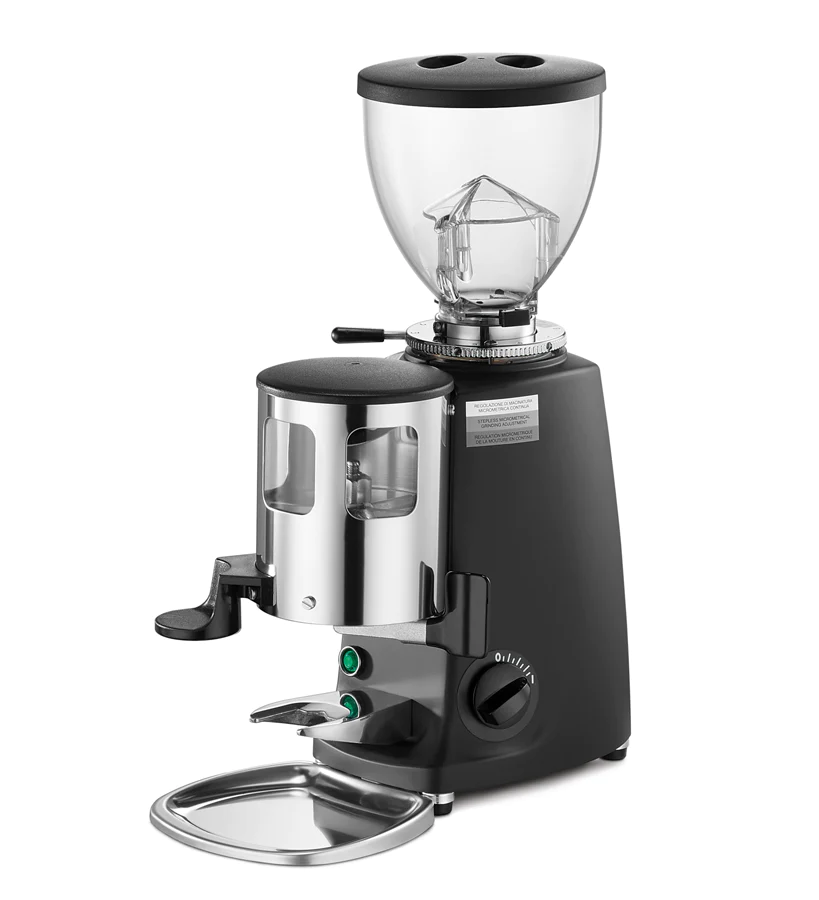
Dosing and non-dosing grinders simply refer to whether they automatically portion out the coffee grounds. After grinding, dosing grinders will split the grounds into different sections or chambers. Each chamber holds a specified amount of coffee grounds for brewing.
A divided amount of grounds, or a dose, can then be removed or placed in a portafilter. This is especially common and helpful for espresso since the coffee grounds can be evenly and automatically batched out for each shot of espresso.
Non-dosing grinders simply do not portion out grounds. They only have buttons to power the machine off and on until the desired amount is ground. Most at-home grinders are non-dosing since they are cheaper and easier to use. However, the less specific batch size does tend to produce more coffee waste.
Stepped and Steppless Grinders
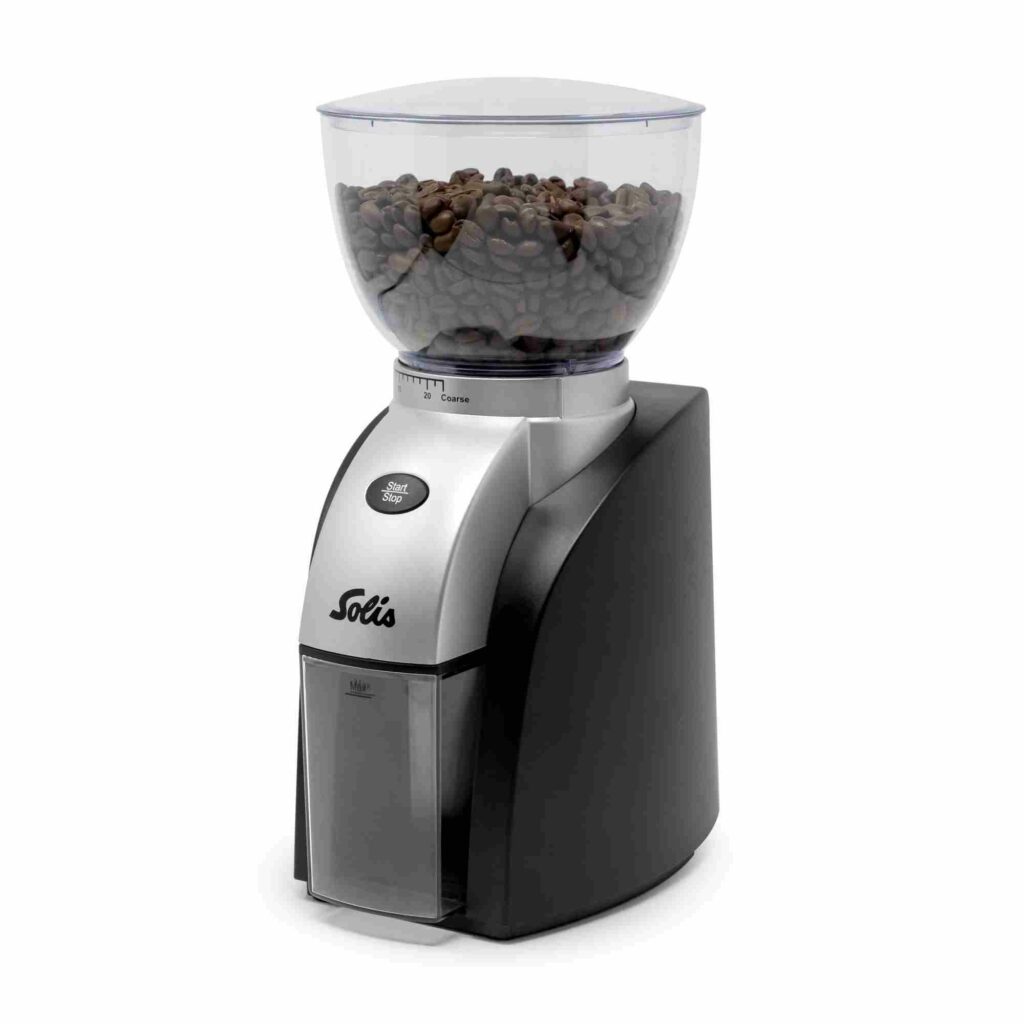
Stepped and stepless coffee grinders refer to whether the grinder has predefined settings, or steps, for the coarseness of the coffee grind. Stepped coffee grinders are the most common, especially for home use.
Stepped grinders have defined settings that determine how close the burrs are to each other and how fine or coarse the corresponding grounds will be. Often, these settings are adjusted by a knob, a dial, or by rotating the bean hopper (where the coffee beans are stored). This helps easily adjust grind settings while having predefined reference points for those settings.
This makes it simple to get a variety of grinds for different brewing methods. Stepped grinders are either self-holding or lever release. Self-holding grinders automatically lock the grind setting for each step. Lever release grinders require that a lever is pushed in order to adjust the settings. The lever is then pushed back into place to lock that setting in before grinding.
On the other hand, stepless grinders do not have predefined settings. Therefore, there is an infinite number of grind settings that could be used via manual adjustments. While stepless grinders may offer the most customized grinding experience, they are difficult to use, and changing settings takes more time.
Manual Grinder
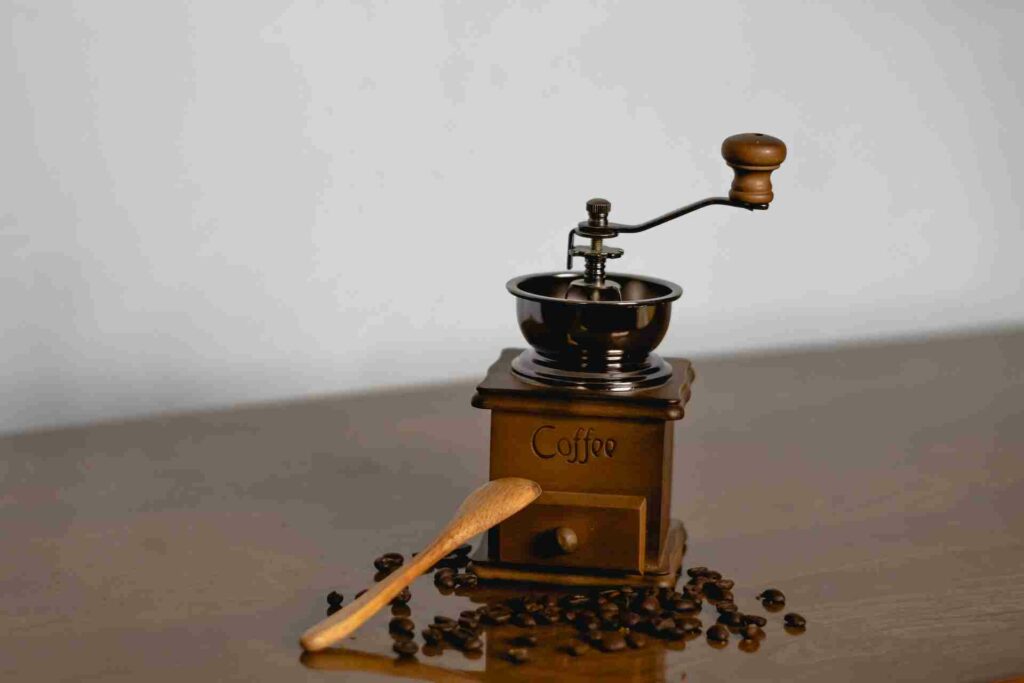
Manual coffee grinders are the most traditional types of coffee grinders available. Most manual grinders feature burrs and a handle that turns a crank, which then rotates the burrs to grind the coffee. Most manual grinders do not have grind settings. Rather, the amount of time spent grinding determines the size of the coffee grounds. The longer the coffee is ground, the finer the grind will be.
While manual grinders are more labor-intensive and not as efficient as automatic grinders, there are some important benefits. Manual grinders do not need a power source, saving electricity and making it possible to grind coffee anywhere. Since they are usually small in size, they are easy to take traveling.
Manual grinders do not produce the amount of noise that most automatic grinders make. Also, manual grinders are some of the cheapest options for coffee grinders, making them a budget-friendly option for anyone.
Lever Release Grinder
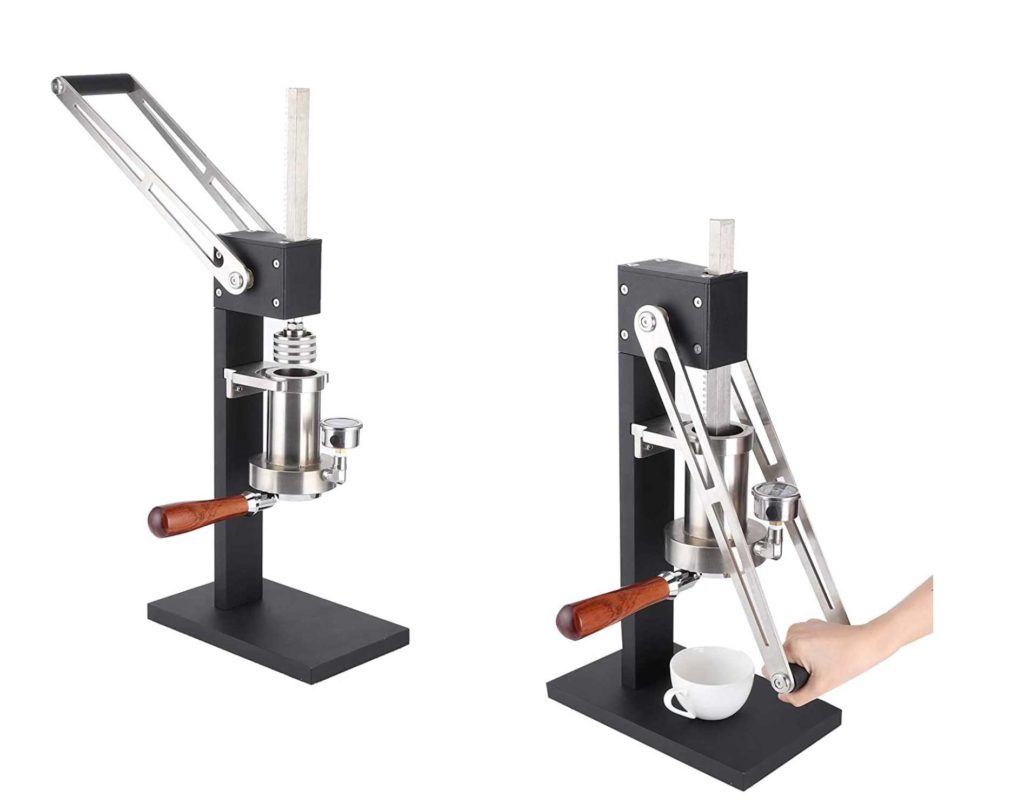
A lever release grinder refers to a type of stepped grinder that uses a lever mechanism to adjust the grind of the coffee. Various types of grinders can use the lever release method, but most are burr grinders. The term stepped grinder simply means that the grinder has preset notches, or steps, and corresponding numbers that indicate the grinding settings. The grinding settings refer to the fineness or coarseness of the coffee. Stepped grinders are the most common grinders, especially for home use.
With a lever release grinder, the adjustments are made by the user pushing down or engaging the lever, adjusting the settings, and releasing the lever. Grind settings are usually adjusted by a dial, or by rotating the bean hopper. When the lever is released, the setting is locked into place for the grinding process. It is usually considered a manual coffee grinder as your action is what grinds the beans.
The Final Sip
As you can see, there are many different types of coffee grinders available, and most of them you will never see. Coffee is a science and there will likely be new types of grinder discovered in the future that alters the way coffee beans are ground up and used.

